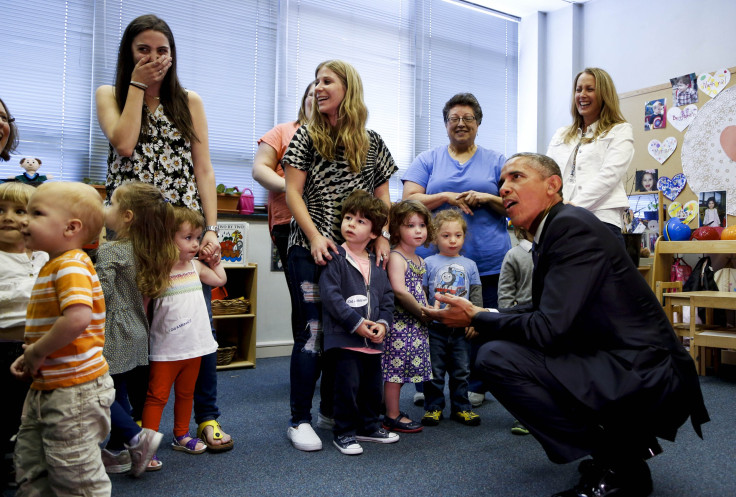Government Shutdown 2015: What Happens To Public Schools If Congress Doesn't Pass A Budget?

The youngest Americans could be the most seriously affected if the United States government shuts down this week. As Congress weighed options Tuesday to avert a federal funding lapse, student advocates were looking ahead and expressing concern about how vulnerable school districts would pay for expenses like utility bills or arts and music classes without government dollars.
The brunt of a potential shutdown would be felt by schools receiving Impact Aid, which allocates money for local districts situated on government land because they don't get property tax revenue, said Deborah Rigsby, director of federal legislation with the National School Boards Association in Alexandria, Virginia. These 1,200 school districts -- which tend to be on Native American reservations, military bases or low-rent housing properties -- rely on about $1.3 billion in federal funds for up to 75 percent of their operating budgets, according to New America, a nonprofit in Washington.
It's "a huge concern" if districts don't get the money, Rigsby said. Affected schools would likely rally to locate other resources in the event of a shutdown, but not all districts have financial buffers in place. "They need the certainty, or assurance, of funding," she added. "What if a district may not have the revenue from other sources? What if there may not be a contingency plan?"
The government faces a shutdown this week if Congress does not act to pass a budget before the end of the fiscal year Wednesday as Republicans work to block federal funding for the healthcare nonprofit Planned Parenthood. House Speaker John Boehner announced his resignation Friday -- a move that pundits speculated would lead to his averting the shutdown by compromising with the Democrats.
Whereas other loan and grant programs are processed prior to the year students or schools utilize them, Impact Aid is disbursed in multiple payments over a given year. If the government shuts down, the whole system for processing districts' aid applications and dispensing the money could go down due to employee furloughs, said Bryan Jernigan, communications director for the National Association of Federally Impacted Schools, a nonprofit in Washington. In the Department of Education's contigency plan, released last week, 3,983 workers would be forced out of office should the shutdown last more than a week. Jernigan said they would simply not be at their desks to release the Impact Aid funds.
That delay could be disastrous for school systems in small, rural communities. "If they don't have the money and they don't know when it's coming and they haven't budgeted correctly, they oftentimes will have to go to their local banks to get a loan to pay teacher salaries or to keep the lights on," Jernigan said.
Other public school programs would likely not feel serious pressure from a temporary budget shutdown, according to the Education Department's plan. About $23 billion has already been appropriated for programs like Title I, which gives funding to school districts serving disadvantaged children, as well as career and technical education. College student financial aid through Pell Grants and the Federal Direct Student Loan program would likely be similarly safe in the short term.
When the government shut down for 16 days in 2013, military academies were among the most affected institutions. Classes were canceled at the Naval Academy in Annapolis, Maryland, and the library and tutoring centers closed at the Air Force Academy in Colorado Springs, Colorado, Politico reported. This time around, "a protracted delay in department obligations and payments beyond one week would severely curtail the cash flow to school districts, colleges and universities, and vocational rehabilitation agencies that depend on the Department’s funds to support their services," according to the contingency plan.
© Copyright IBTimes 2024. All rights reserved.






















